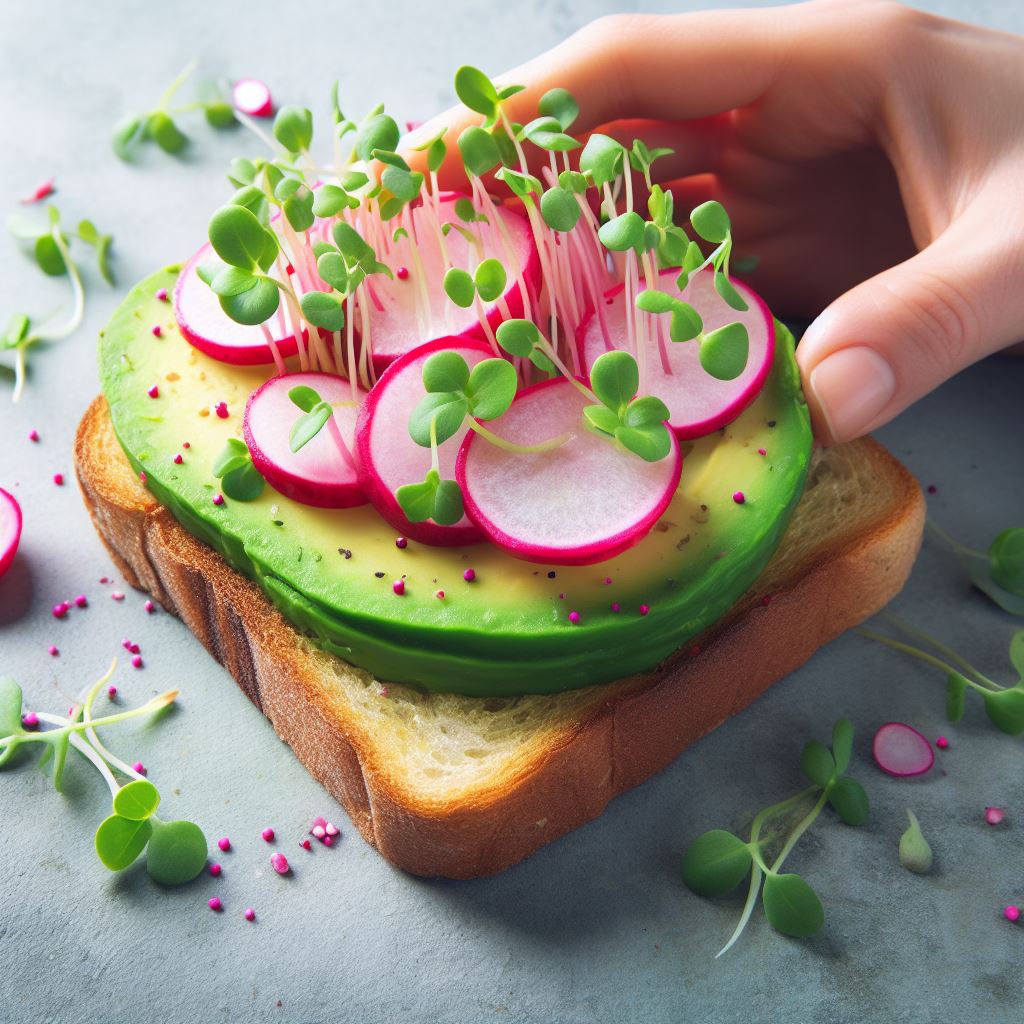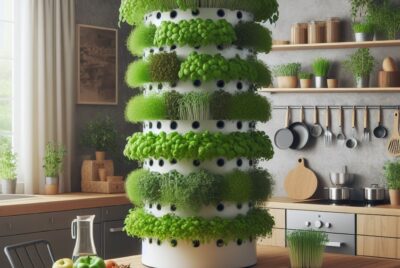What are Microgreens? Exploring Nature’s Tiny Powerhouses
As a fervent advocate for a healthy lifestyle, I can’t help but share my enthusiasm for one of nature’s hidden treasures – microgreens. These tiny greens are not just a feast for the eyes but also a powerhouse of nutrients. Let’s embark on a journey to discover what microgreens are and how they can enrich our lives.
Types of Microgreens
Microgreens encompass a wide array of plant species, each offering its unique flavor profile and nutritional content. Some popular varieties include broccoli, kale, radish, and sunflower shoots. Their vibrant colors and distinct flavors add a delightful touch to salads, sandwiches, and various dishes.
Nutritional Benefits of Microgreens
Rich Source of Vitamins and Minerals
Despite their diminutive size, microgreens pack a powerful punch of essential nutrients. They are exceptionally high in vitamins like A, C, E, and K, along with minerals like iron, calcium, and magnesium. Incorporating them into your diet can significantly enhance your overall nutrient intake.
Antioxidant Properties
These tiny greens are a treasure trove of antioxidants that help combat oxidative stress and protect cells from damage. This makes them an excellent addition to an anti-aging regimen and a boon for overall health.
Digestive Health Benefits
Microgreens are a great source of dietary fiber, which aids digestion and promotes a healthy gut. Including them in your meals can alleviate digestive issues and contribute to a balanced digestive system.
How to Grow Microgreens at Home
Growing microgreens at home is not only a rewarding experience but also an assurance of their freshness and quality. It’s a straightforward process that requires minimal effort.
Selecting Seeds and Soil
Choosing high-quality organic seeds and a nutrient-rich soil mix is crucial for a successful harvest. Opt for varieties that align with your taste preferences and nutritional goals.
Planting and Germination
Spread the seeds evenly on a tray filled with soil, press them gently, and water thoroughly. Place the tray in a well-lit area, and within a few days, you’ll witness the magic of germination.
Care and Maintenance
Regular watering and ensuring adequate light exposure are the keys to healthy microgreens. Keep a watchful eye on their progress, and you’ll be rewarded with a lush bed of greens in a matter of weeks.
Harvesting and Storing Microgreens
Timing is crucial when it comes to harvesting microgreens. Once they reach a height of 1-3 inches, it’s time to snip them just above the soil line. Store them in a clean, airtight container in the refrigerator, and they’ll stay fresh for up to a week.
Incorporating Microgreens into Your Diet
The versatility of microgreens knows no bounds. From adding a crunchy texture to salads to garnishing sandwiches and wraps, these greens elevate any dish.
Culinary Uses
Experiment with microgreens in various cuisines. Their tender leaves and distinct flavors complement both savory and sweet dishes.
Healthful Recipes
Try out a simple avocado toast topped with radish microgreens for a nutritious breakfast or add a handful of broccoli microgreens to your favorite pasta for an extra nutrient boost.

Why I Love Microgreens
As someone who strives for a sustainable and healthy lifestyle, microgreens hold a special place in my heart. Their nutritional density and ease of cultivation make them an invaluable addition to any diet.
Environmental Benefits of Microgreens
Apart from being a nutritional powerhouse, microgreens are also champions of sustainability. Their short growth cycle and minimal resource requirements make them an eco-friendly choice for conscientious consumers.
Cost-Efficiency and Accessibility
Growing your own microgreens is not only cost-effective but also empowers you to have a fresh supply at your fingertips. Say goodbye to frequent trips to the grocery store.
Microgreens in a Nutshell
In essence, microgreens are a testament to the marvels of nature. These tiny greens, bursting with nutrients, can easily be cultivated at home, offering a plethora of health benefits.
Additional Benefits of Microgreens
Microgreens offer a plethora of benefits beyond their impressive nutritional profile.
Beauty and Skincare Applications
The vitamins and antioxidants found in microgreens can do wonders for your skin. Incorporating them into your skincare routine can help fight signs of aging and promote a healthy, glowing complexion.
Immune System Boosting Properties
The rich concentration of vitamins, particularly vitamin C, in microgreens can give your immune system a significant boost. Regular consumption can help your body fend off illnesses and infections.
Culinary Creativity and Unique Flavors
Microgreens not only add a burst of color to your dishes but also introduce unique and diverse flavors. Experimenting with different varieties can lead to a whole new level of culinary creativity in your kitchen.
Microgreens as Educational Tools for Children
Growing microgreens with children can be a fun and educational experience. It teaches them about the natural growth process of plants, the importance of nutrition, and instills a sense of responsibility.
Community and Social Benefits
Sharing the knowledge of microgreens with your community can have a ripple effect. It fosters a sense of camaraderie, encourages sustainable practices, and promotes a healthier lifestyle collectively. Organizing workshops or community gardens centered around microgreens can be a fantastic way to bring people together.
Beauty and Skincare Applications
Incorporating microgreens into your skincare routine can be a game-changer. Their high content of vitamins A and C, along with antioxidants, can help combat free radicals, promoting healthier, more radiant skin. You can create your own nourishing face masks or look for skincare products infused with microgreens for an added boost.
Immune System Boosting Properties
Especially in today’s world, having a robust immune system is paramount. Microgreens, with their concentrated vitamins and minerals, can fortify your body’s defenses. Regular consumption can help ward off common illnesses and keep you feeling your best.
Culinary Creativity and Unique Flavors
Microgreens are not just about nutrition; they’re also about flavor exploration. Each variety brings its distinct taste profile to the table. Peppery arugula microgreens, for example, can add a zesty kick to salads, while delicate basil microgreens infuse dishes with a fresh, aromatic note. Incorporating these tiny greens into your meals can elevate your culinary creations to new heights.
Microgreens as Educational Tools for Children
Introducing children to the world of microgreens is a hands-on way to educate them about nutrition and sustainability. Watching seeds sprout and grow into vibrant greens can be a fascinating experience for kids. It teaches them valuable lessons about the natural world, healthy eating habits, and the joy of nurturing plants.
Community and Social Benefits
Sharing the knowledge and joys of microgreens with your community can have a positive impact on many levels. It creates opportunities for like-minded individuals to come together, exchange ideas, and support each other’s wellness journeys. Initiatives like community gardens or workshops on microgreen cultivation can foster a sense of unity and promote sustainable practices.
Conclusion
In conclusion, microgreens are truly nature’s miniature marvels, offering a wealth of benefits for both our health and the environment. From their exceptional nutritional content to their ease of cultivation, there are countless reasons to incorporate these tiny greens into your lifestyle.
So, whether you’re a seasoned green thumb or a curious beginner, consider giving microgreens a try. Start with a small tray of your favorite varieties, and watch as they flourish into a bounty of fresh, nutrient-packed greens. Your body, taste buds, and the planet will thank you.
Frequently Asked Questions
Are microgreens the same as sprouts?
No, microgreens are more mature than sprouts. They are harvested after the first true leaves have emerged.
Can I grow microgreens without soil?
Yes, you can grow microgreens hydroponically using a growing medium like coco coir or hydroponic mats.
What are some common challenges when growing microgreens?
Over-watering, inadequate light, and overcrowding of seeds are common challenges.
Can I freeze microgreens for later use?
While it’s possible, it’s not recommended as freezing may affect their texture and flavor.
Do microgreens have any known side effects?
Generally, microgreens are safe to consume, but individuals with specific allergies should exercise caution.




